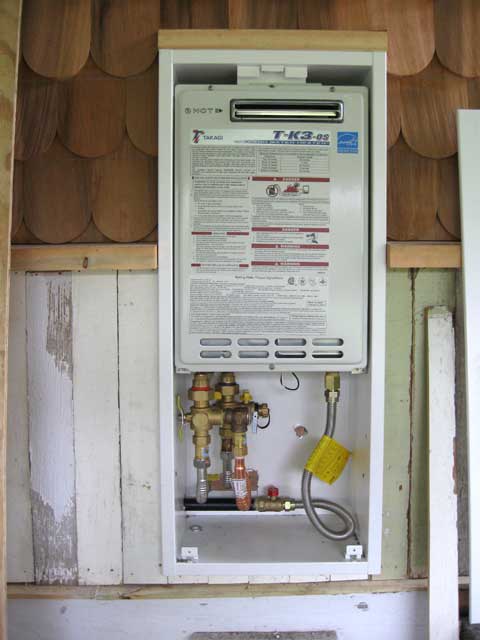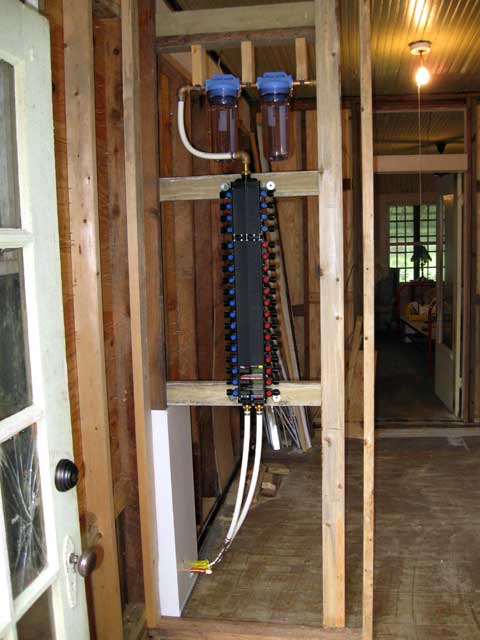Sooo…some plumbing is done. Yeah, I know it looks like a science project…but we always said, this is to be a Victorian house with modern features.
The tankless water heater is in and hooked up (not fired up yet). Not shown below are the electrical connection and the remote monitor panel connection.
I have to say, I have intensely mixed feelings about installing this water heater.
On the plus side:
1) Space saver. No large water heater closet needed.
2) No vent stack needed.
3) Efficient. Costs MUCH less to operate over the year than its tanked brethren.
4) Geekiness. It has a remote panel that indicates water flow, inlet and outlet temperatures, you can set the water temp, and turn it off as well.
On the minus side:
1) Cost. It about 30% more spendy to purchase then it’s tanked brethren, although some of that is offset by the lack of need to buy and install a new vent stack.
2) Complexity. MUCH more complex than the old fashioned kind. Computer boards, electric ignitors, and miscellaneous sensors are involved. I’m just worried that it won’t be reliable and long lasting. Only time will tell. It’s an expensive experiment…
Back to the installation…
If anything at all scares me about this project, it’s how much all the little things add up.
Water heater? No problem. I know the cost and planned for it.
Hooking up said water heater? Youch! Three high-grade flexible hoses. A gas pipe and fittings. A gas valve and flexible hose. Several brass nipples. Various fittings. If I add in the isolator valves required…we’re in the $200 range…just in fittings to hook the durn thing up. Sheesh.
Moving inside…the tankless is fed from, and returns the hot water to a PEX manifold, which serves as a distribution point for all the needed fresh water plumbing in the house, much like a breaker box for electricity.
Keep in mind all this will be embedded in a wall (framing is there) with cabinet doors for access…probably all beadboard for those that must know.
Advantages are no joints under the house or in the walls, quicker hot water to its usage point, ease and cost of installation, code approval, and more (discussed in a different article/later). The PEX manifold is fed from the main via the filters above.
Some will ask about the need for filters…I installed them as the tankless hot water heaters all recommend a good sediment filter be installed before them in the line. The heat exchangers are so fine that sediment could clog them up and also cause corrosion.
Well, if I’m going to filter sediment from the hot water, I may as well for the cold too.
Two filters…the first one courser then the second, which lengthens the change period to probably every 6-9 months. I’ll just do it every 6 months…ya know…when you’re supposed to change your smoke and CO detector alarms. Y’all DO change those alarm batteries every 6 months, yes?
Water sent to outside spigots will NOT be filtered (waste of media).
Now…if I can just avoid cross-wiring this cool looking thing to the new electrical service, ala “Three Stooges” … you know…water shooting out the chandelier and such…then life will be good!
CUAgain,
Daniel Meyer




3 Responses to Science Project?